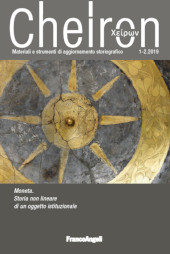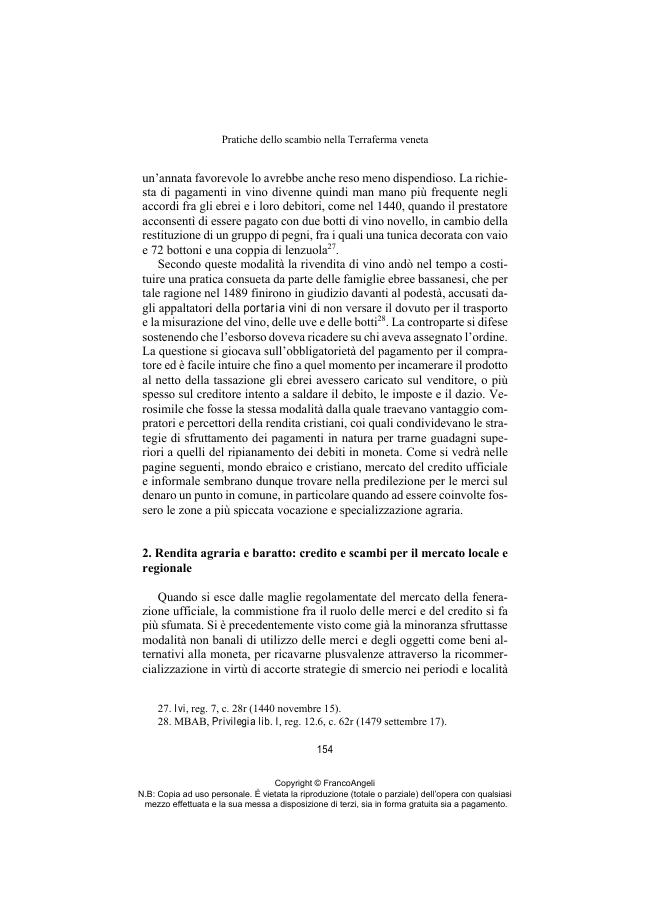Pratiche dello scambio nella Terraferma veneta rinascimentale : il ruolo dei beni denaro-equivalenti nel mercato del credito urbano e agrario
142-166 p.
L'articolo confronta l'impiego dei beni denaro equivalenti nel mercato del credito urbano e agrario della Terraferma Veneta rinascimentale, attraverso i casi della città di Vicenza e del centro minore di Bassano. Per entrambi sia il mercato del credito regolamentato che ufficioso si basavano su oggetti e materie prime. Da un lato i prestatori ebrei fondavano i loro guadagni su una vantaggiosa stima dei pegni e l'essere ripagati in merci. Dall'altro, la parte cristiana cui era vietata la pratica usuraria, utilizzava forme di credito mascherato basate sul possesso della terra e la rendita. Entrambi provano come i profitti scaturissero da un sapiente uso del baratto, che si dimostra un mezzo efficiente in un contesto in cui l'indebitamento era strutturale, diffuso e aiutava la creazione di "denaro virtuale" e investimenti. [Testo dell'editore].
This article analyses the recourse to moneyequivalent goods in the urban and agrarian credit market in the Renaissance Venetian Mainland State, highlighting the case studies of the city of Vicenza and the smaller town of Bassano. In both cases the regulated and unofficial credit markets were largely based on goods and commodities. On the one hand Jewish moneylenders grounded their business on a profitable assessment of pledges and the opportunity to be repaid in wares. On the other hand, Christians practiced hidden forms of usury based on landowning and farm incomes. The two thus based their gains on a skilful use of barter, that proved to be an efficient economic tool in a context in which indebtedness was intrinsic, largely spread and helped the creation of "virtual money" and investments. [Publisher's text].
-
Artikel aus derselben Ausgabe (einzeln erhältlich)
-
Informationen
ISSN: 1127-8951
KEYWORDS
- Beni denaro equivalenti, Stato veneziano rinascimentale, prestito ebraico, baratto, mercato creditizio
- Money-equivalent goods, Renaissance Venetian State, Jewish moneylending, Barter, Credit market



